The Ultimate Guide To Choosing Landscaping Materials For a Beautiful Backyard
Do you dream of having a gorgeous yard in which to host, relax, and enjoy the outdoors?
Just imagine it: sitting on the back deck sipping a cool iced tea, looking out over your beautiful landscaping and flowerbeds. Heaven on earth, right?
However, at Ebyland, we know that relaxation comes at a price. You have to create that beautiful landscape before you sit back and enjoy.
In this article, we will explore all the materials needed to make this vision a reality and go over some tips for implementing them.
Ready to get started?
Let’s take a look.
Why Put Effort Into Your Landscaping?
Beautiful landscaping provides you with the perfect excuse to kick back and relax! But landscaping is a lot of work, and it's not like you can't relax inside. Other than just having a nice relaxing space, why should you put effort into your yard?
Here are a few reasons why it’s worth investing in good landscaping.
Increases home value
Great landscaping increases the curb appeal of your home. The greater the curb appeal of your home, the stronger bargaining position you gain with potential buyers.
Cam Merrit from Home Guides states that “A well-landscaped home has a significant price advantage over a home with no landscaping. This advantage can range from 5.5 percent to 12.7 percent, depending on the type of landscaping and the home’s original value.”
Plus, unlike some home improvements, landscaping gains value over time since plants become larger and better established with the years.

Improves the aesthetic appeal of your home and neighborhood
Beautiful landscaping makes your house a more attractive and welcoming place for guests and visitors, not to mention your neighbors.
Your neighbors have to look at your house too, and they will thank you for keeping your place up and not letting it become an eyesore.
Adds a personal touch
The inside of your home should reflect your personality, tastes, and values. Why should the outside be any different?
Landscaping is one more arena where you can let your personal creativity and inspiration flow. Your landscaping should have your personal touch woven into it.
Also, landscaping gets you outside, active, and soaking up the sun! This is a great perk if you want to cut down on your screen time and stay active, healthy, and creative.
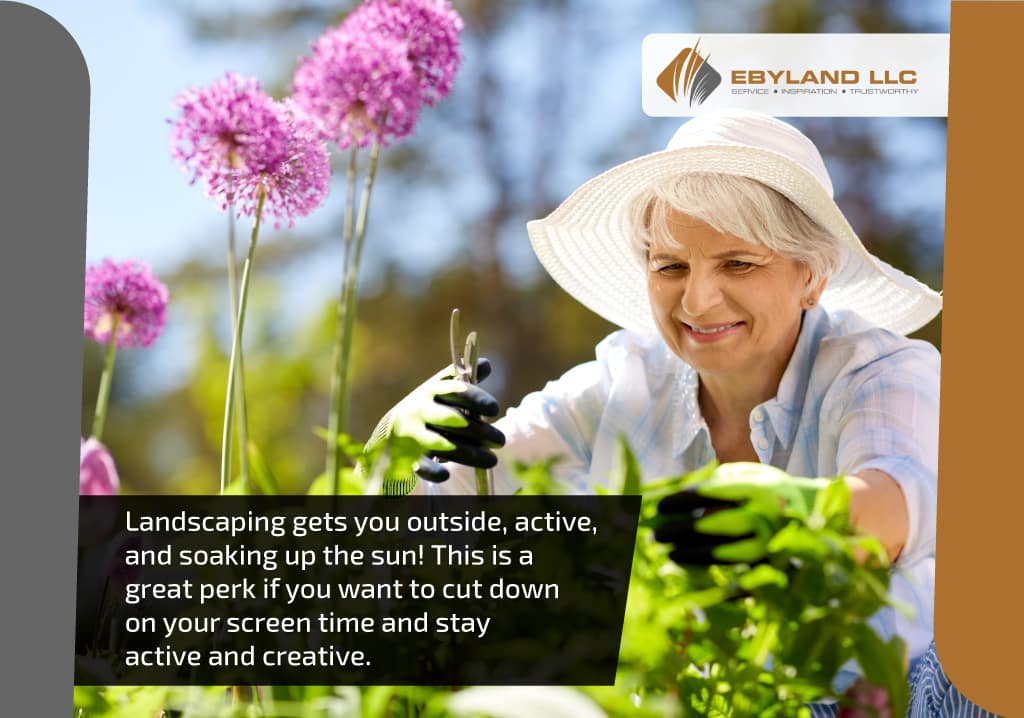
10 Essential Types of Landscaping Materials
Feeling ready to do some landscaping? Let's talk about some nitty-gritty details.
What materials do you need to implement the designs of your imagination?
Let’s look at 10 essential landscaping materials plus when and where to use them.
Here is number 1!
1. Mulch
If you are a hardcore landscaper, you need to know your mulches! Mulch is an essential landscaping material.
In basic terms, mulch is anything spread over the soil as a cover. There are two basic types of mulch, organic and inorganic. Mulch can be useful in several ways:
- It suppresses weeds.
- It enriches the soil.
- It helps retain moisture.
- It improves aesthetics and helps you achieve certain looks.
You can use plenty of specific types of mulch for certain purposes, such as wood mulch, straw, grass clippings, bark mulch, dyed mulch, and more. Each type is best for a different task, and has its own set of pros and cons.
For more info on some of these types, read our blog Mulch: Everything You Need To Know (plus great mulching tips).
There is no quicker or easier way to spruce up your landscaping than adding fresh mulch to your flowerbeds! A 3-inch layer of mulch revolutionizes the look of your grounds and breathes new life into your plants.
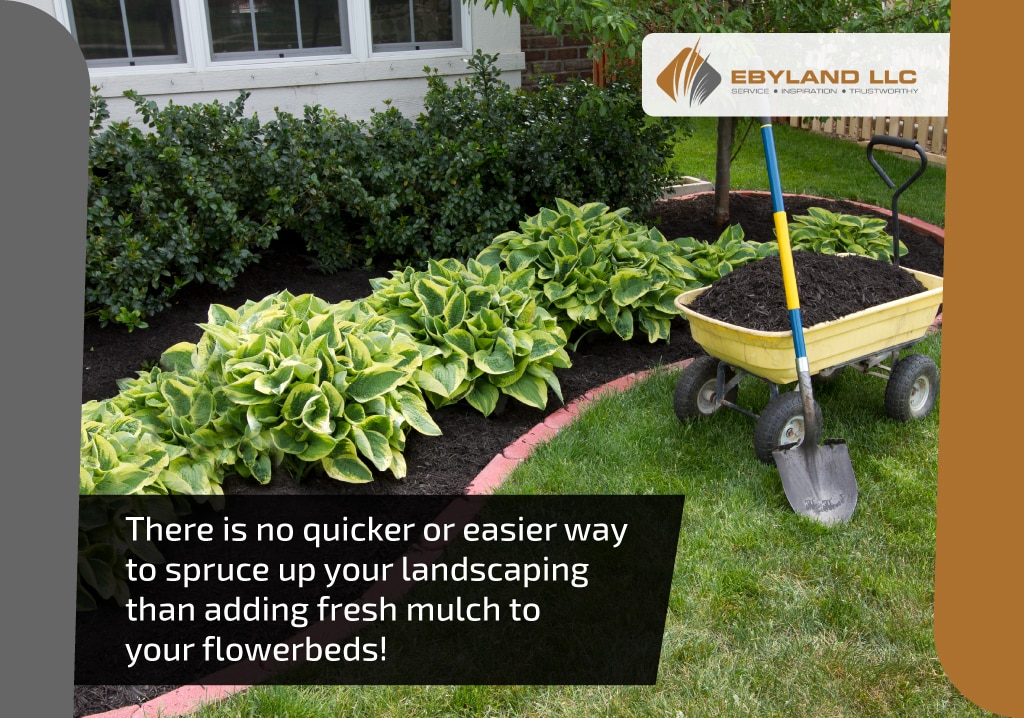
2. Garden soil
It’s best to start with the basics, right? Soil provides the base for your entire garden, which is why it is important to put some work into your soil. Plants will not thrive in sub-par soil.
Garden soil is a mix you can buy in stores that is designed to optimize your garden or raised beds for plant growth. It combines different elements to make for rich soil where plants can sprout, grow, and thrive.
Some of the elements in garden soil may include:
- Screened topsoil to create a solid base
- Mushroom compost and bark to add nutrients and organic matter
- Sand to allow for better drainage
- Fine bark mulch to keep the soil loose
Garden soil is most often used for gardens, raised beds, and flowerbeds. It works best when mixed with native soil. It can give the native soil the boost it needs.
3. Topsoil
Another soil type you may run into is topsoil.
What is the difference between topsoil and garden soil?
As we discussed, garden soil has things mixed into it to make it richer and better suited for plants.
On the other hand, topsoil is technically just the top 4-12 inches of dirt on the ground. It can be harvested during construction or other projects and sold for landscaping. It is better for filling large areas or creating a base for a garden, but it's not as rich as garden soil or compost.
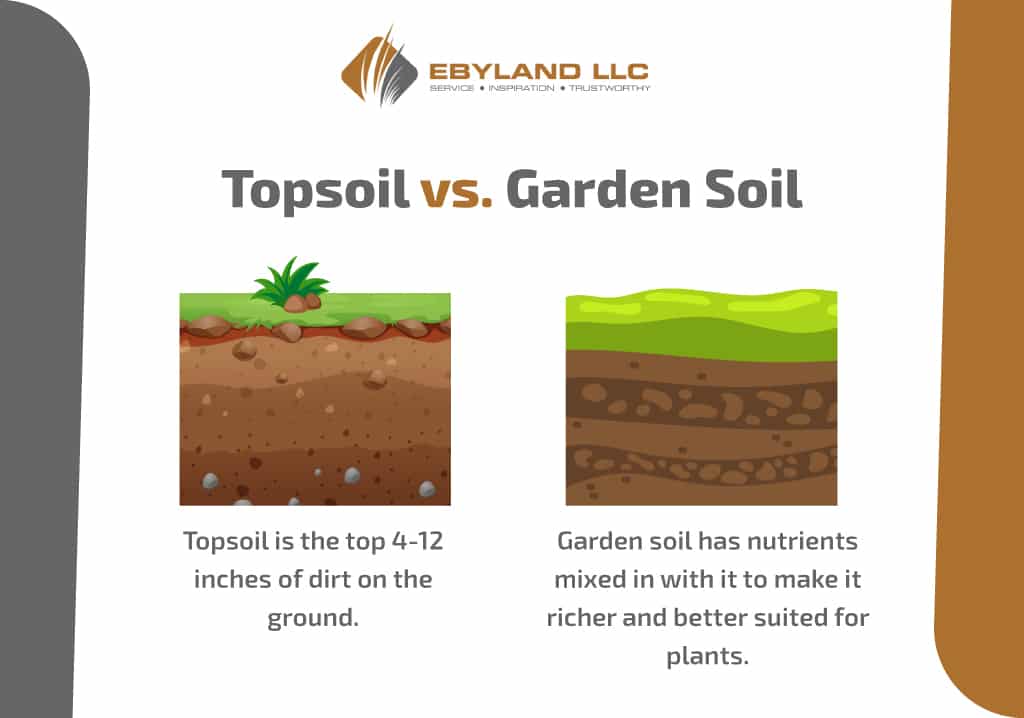
You can use topsoil for several different purposes:
- Planting new grass or starting a garden
- Adding a layer of soil to new lawns, previously paved areas, or areas affected by erosion
- Fill dirt for leveling low areas.
Topsoil generally contains fewer nutrients than garden soil or compost, so it is more useful as filler dirt than as a soil enricher.
4. Composts
The addition of compost can improve all soil types! It is the richest type of soil you can buy.
Compost is aged, decomposed organic matter rich in nutrients and great for plants. Adding it to your soil improves the soil in several ways:
- It adds nutrients for plants.
- It improves soil structure.
- It helps with moisture retention.
- It adds microorganisms and attracts earthworms to your soil.
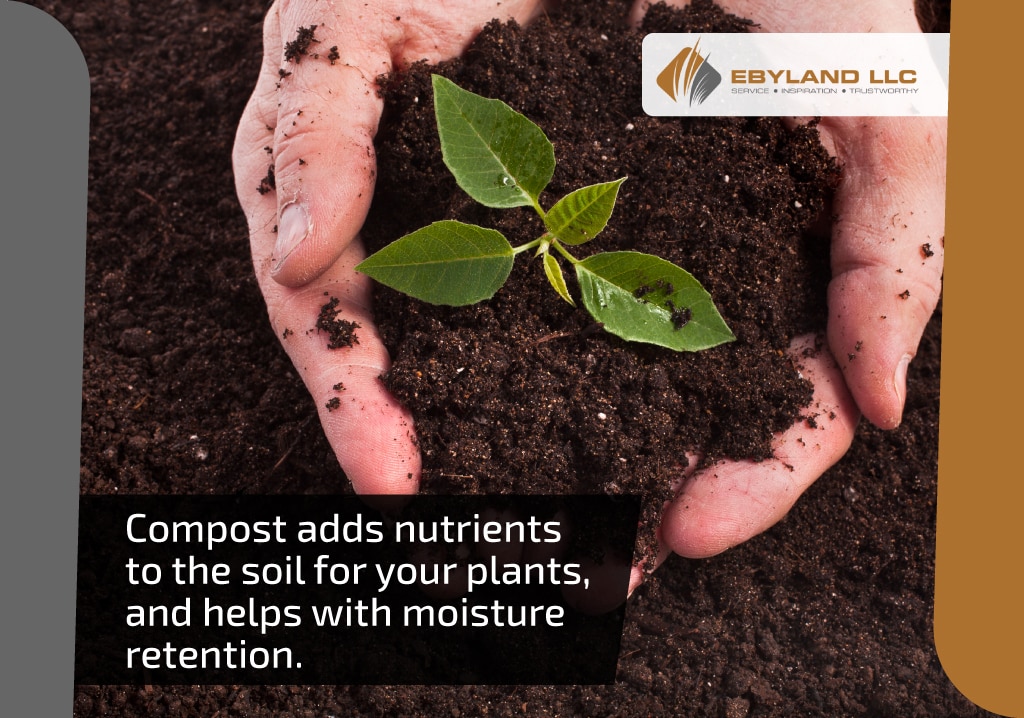
Types of compost vary and can include mushroom compost, farm manure, and homemade compost from household food waste. If you are an avid homesteader and gardener, try starting a compost pile of your own!
Compost is a great soil addition whether you want to improve your garden, flower bed, or yard. You can use it as mulch on flowerbeds, mix it into the soil in your garden, or apply it locally around trees and plants to give them a boost and enrich your dirt.
5. Decorative Gravel
Moving on from soil improvements, we come to decorative gravel.
There are lots of different types of gravel to use in your landscaping, and they are well-suited for different purposes and aesthetics.
For example, river rock is smooth, medium-sized stone well suited for creating a driveway. Lava rock is porous and colorful and, surprisingly enough, can make good mulch for flowerbeds, helping regulate soil temperature and hold in moisture. (To learn more, read our blog Lava Rock: What It Is, and How to Use it in Your Landscaping.)
Other types of gravel include pea gravel, jersey shore gravel, and marble chips. Each one can be used for lots of different purposes.
You can use gravel as a decorative ground cover or for practical purposes such as driveways, walkways, and drainage solutions.
You could also use it between large stepping stones or a gravel garden. In the case of some types, such as lava rock, you can even use it as mulch in your flowerbeds to keep down the weeds!
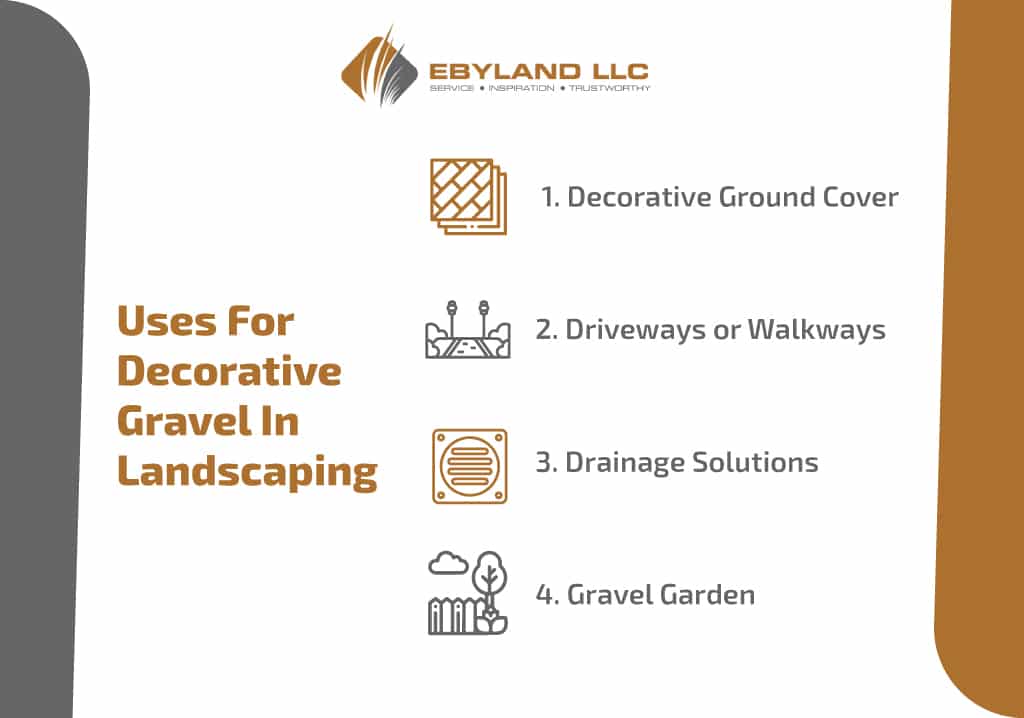
6. Crushed stone
Crushed stone is similar to gravel but is normally used more for utilitarian purposes and less for decorative purposes. Whereas gravel is naturally occurring small stone, crushed stone is small pieces of larger stones that are crushed manually.
This means crushed stone is sharper, harder to walk on, and less attractive than gravel. Therefore, it is not usually used as decorative rock or mulch. It's more of a construction material.
Crushed stone is usually classified by numbers denoting the size of the granules. For instance, #57 crushed stone (some may call it gravel) is about ¾ inches in diameter. A few more common types of crushed stone are #411, #67, #10, and #3.
Crushed stone can be useful in landscaping for driveways, fill, and drainage projects. You can also use it as a base and then layer gravel over the top.
7. Landscaping sand
There are multiple ways to use sand in your landscaping too!
For starters, landscaping sand is often used as a construction material in projects like walkways and driveways. It makes a great leveler and base layer and is often used to fill the cracks between pavers. It helps keep the pavers from shifting and makes the whole thing more stable.
If you want to incorporate a children’s play area or sports area into your landscaping, sand is a great medium! It provides a soft surface for kids and protection from falls. You could even make a fun, elaborate sandbox for kids with lots of sand toys!
Sand can add a nice aesthetic to your landscaping too; for instance, you could use sand to make a zen garden or a rock garden.
Characterized by their lack of living plants, Zen gardens come from Japan and are made of gravel, sand, and large rocks. They are great for those who weren’t blessed with a green thumb or simply want a low-maintenance garden. (Who can kill a rock??)
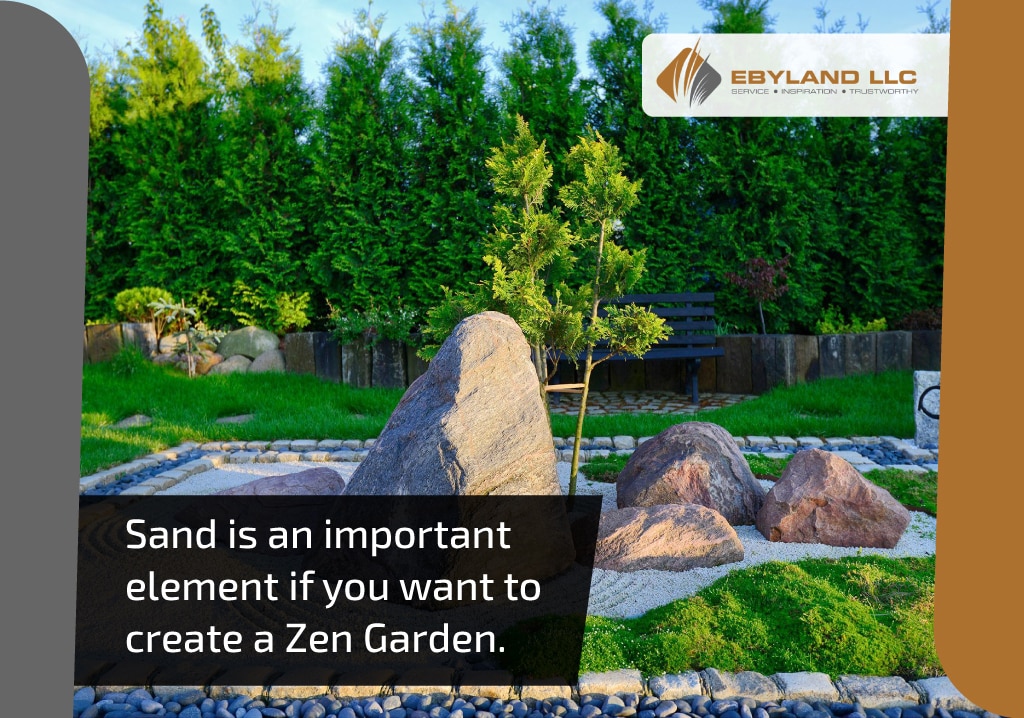
8. Plants and trees
Let's not forget about the living elements of your landscape. They are what really bring the space to life. There are many benefits to planting trees and plants. This vegetation can:
- Help control stormwater and erosion
- Provide privacy
- Provide shade
- Fight climate change
- Raise property value
- Add beauty to your home
Here are a few things to think about when you are selecting the flora for your landscaping:
- Budget
- Ease or difficulty of care
- Compatibility with your soil type and neighboring plants
- Aesthetics
- Size (be sure to consider growth!)
- Perennial vs. annual
Think about it this way: Planting trees and other plants is an investment because it is improving your home.
Plus, plants are a home improvement that gains value over the years since they grow and become better established and more beautiful over time. Don’t wait to start investing! The sooner you start, the sooner your investment can begin to grow.
For more info on decorating with trees, read our blog post on how to plant a tree or shrub.

9. Pavers
Pavers are paving stones you can use for all sorts of things. They come in hundreds of different colors, materials, and styles, so you can choose just the right look for your project.
People use pavers for:
- Edging a flowerbed
- Creating a walkway or patio
- Creating a pool deck
- Arranging in a geometric pattern to add some interest to your garden
The options are endless! You could pair pavers up with mulch, gravel, or sand, plant flowers between them, arrange them in a pattern, or use them to block off different sections of your garden.
The sky’s the limit. Visit our blog to learn more about how to use pavers and other hardscapes!
10. Other non-living elements
What other non-living materials should you consider adding to your landscape?
After all, it takes a mixture of softscapes (living matter) and hardscapes (non-living matter) to make a beautiful backyard. Together, all the elements make a pleasing and intriguing combination.
For instance, jazz up your space with some landscape lighting to make your backyard glitter and twinkle while also making it safer to navigate at night. Other quality hardscaping to consider includes a concrete walkway or a flagstone patio.

Don’t forget to include a sitting area and add some outdoor furniture! Once you have created your beautiful backyard you will want a place to sit back and enjoy it. The kids would love it if you added a playset so they can romp while you enjoy the peace and quiet.
Other neat touches you could add to your landscaping include:
- A water garden
- Fire features
- A pergola or gazebo
Tips For Choosing Quality Landscaping Materials
We've just discussed ten of the essential landscaping materials you will need to make your backyard vision a reality.
But how do you select quality materials and make good decisions for your landscaping?
Here are some quick bonus tips for choosing landscaping materials for your projects. (If you want a more in-depth guide to landscape design, read our blog The Ultimate Guide to Designing a Beautiful Backyard)
Before you buy anything, make a detailed plan for your landscaping. Envision everything in your head and draw it out for yourself. Then, make a materials list including everything you will need.
Know your conditions
Make sure you are familiar with your local soil type, weather patterns, and existing plants. Do you have chalky, alkaline soil? Buy plants that thrive in those conditions. Does your yard have drainage issues? You may want to plan a drainage solution before installing a patio.
Plan your garden and make your material and plant selections based on what you know about your local conditions.
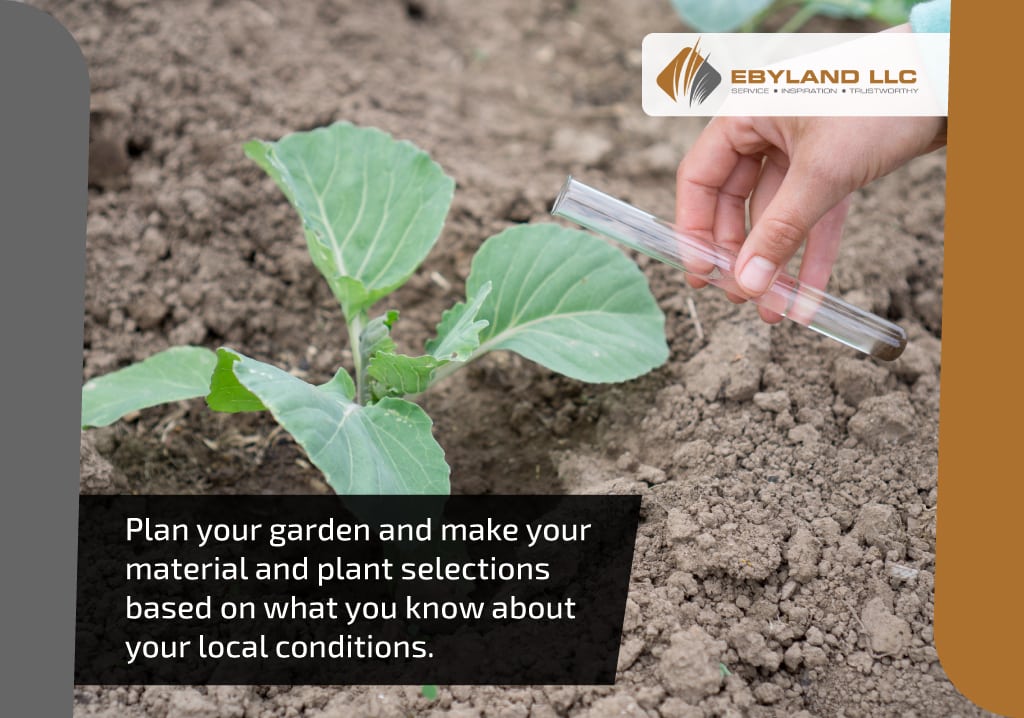
Plan your budget
As much as we would all like to go buy out our local plant nursery, it’s best to have an idea of what you should spend before you go shopping!
Then you can prioritize and pick out your materials accordingly.
Find a great landscaping company
Finally, find a quality landscaping company you can trust to sell you quality supplies. You want to rest assured that you are getting the best!
Conclusion
Are you ready to get your hands dirty and make your imaginary garden or backyard a reality?
Now you know a bit more about what materials you may need to make it happen!
If you are looking for a landscaping company to fill your needs in the Cumberland, MD area, give us a call at Ebyland.! We will do our best to ensure that you get the best possible materials, plants, and trees.
Some of our products include:
- Natural stone
- Grills and Fire pits
- Hardscape materials
- Landscape lighting
- Landscape supplies
- Outdoor furniture
- Nursery greenhouse
It’s easy to buy from us:
- Choose your products
- Pick them up or have them delivered to you
- Enjoy your lovely outdoor space!
We look forward to hearing from you.
